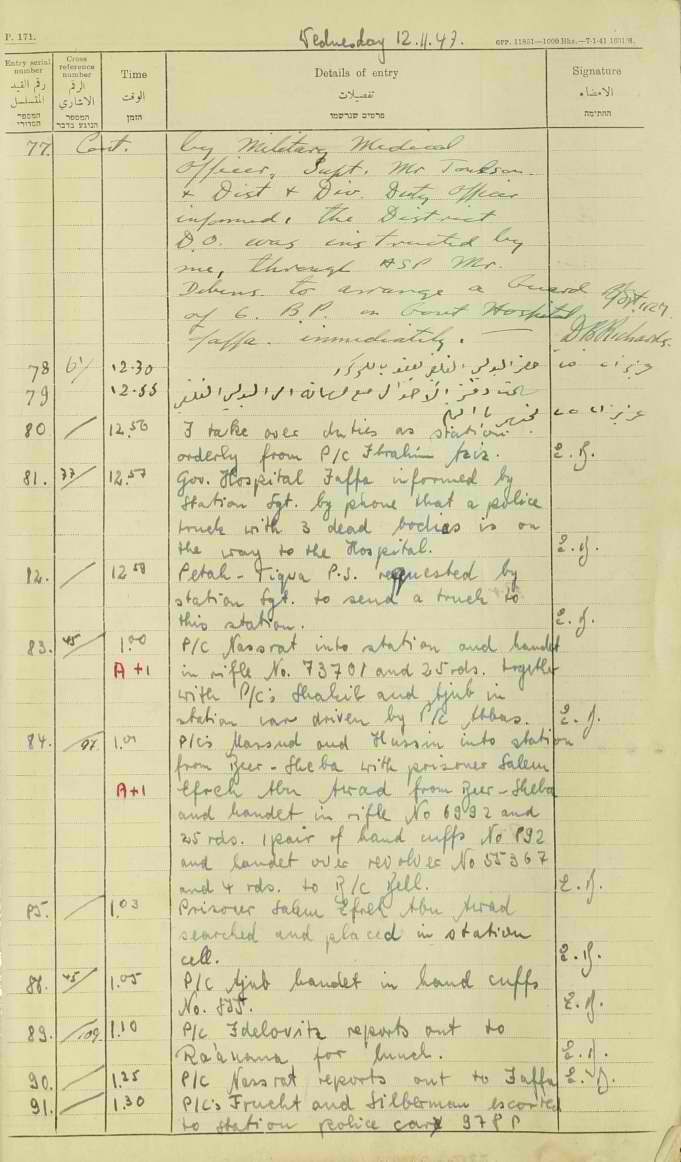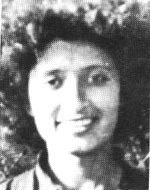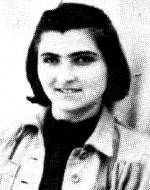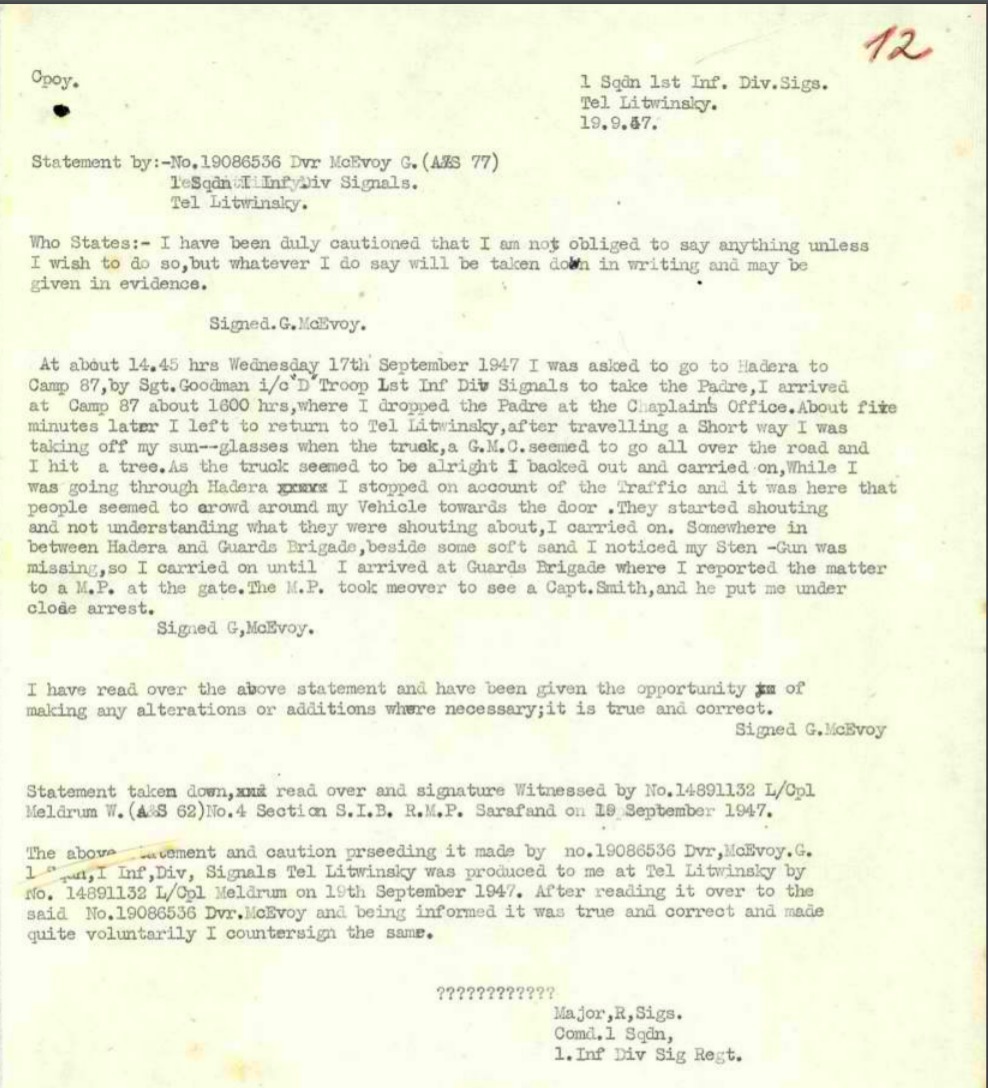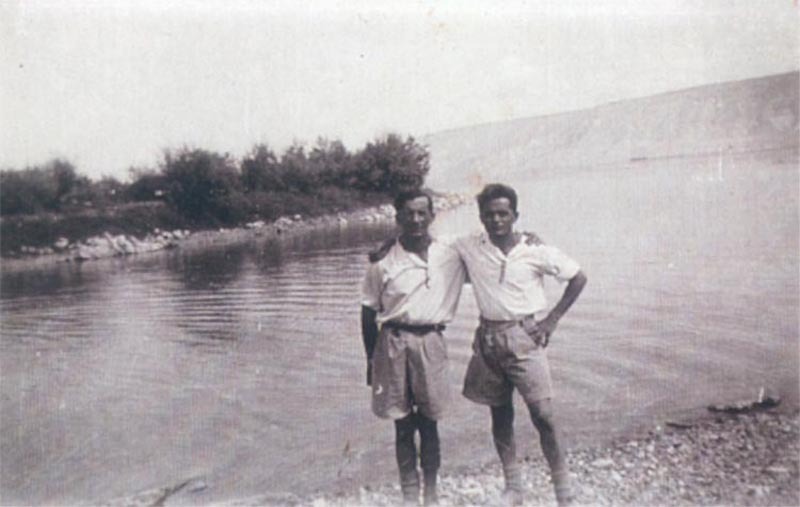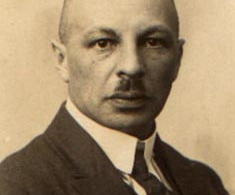On May 14, 1948, after nearly 28 years, the British Mandate over Palestine ended with the founding of the State of Israel.
Now over 5,000 documents declassified by the State Archives shed a light on the last decade of British rule, exposing the yet untold story of a long series of events where soldiers wounded and killed Jews living in the region.
7 View gallery
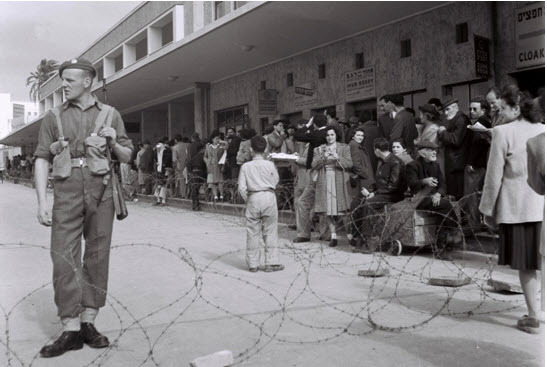

A British soldier guarding the fenced off Tel Aviv central bus station during a curfew imposed under martial law in 1947
(Photo: GPO)
Some of these files show that the British tried to cover up the killing, documenting killings made in cold blood as acts of self-defense or misfires.
The State Archives say that in many cases, the families of the dead were not informed about subsequent investigations.
Gunned down while running away
Among the files uncovered are the Ra'anana Police records, which show for the first time the British point of view in the infamous killing of the "Lehi Children."
On November 12, 1947, British troops attacked a house in Ra'anana where Lehi was conducting a firearm course for a group of youths.
In the attack, 4 children aged 15-18 and a 19-year-old instructor were killed.
Already at the time, the British were blamed for killing the children in cold blood. According to testimonies, the group did not fire back and were mowed down while running away from the house.
"According to the information given, there was a group practicing with live firearms in one of the houses in the Ra'anana area, troops belonging to the 500th regiment were sent there," said uncovered Ra'anana Police records.
"At four minutes after 10am, they burst through the front door of the house and found a group of youths, boys and girls, in a second room, who were being instructed on how to use weapons with several firearms in the room. Commander Richard saw his forces were under immediate danger and ordered to open fire."
"The commander ordered to break-in through another opening in the house, which was covered with a blanket," the records continue.
"The group jumped out of the house in all directions and started to flee, with several of them remaining in the house after being wounded from British gunfire. Three of them are dead: an unidentified girl around age 15; an unidentified girl around age 16; a boy named Yaakov Singer who lives at 71 Rothchild St., Petah Tikvah. Severely wounded: an unidentified girl around age 16; a boy named Shalom Mahrovski, who lives at 11 Arlozorov St., Tel Aviv, no older than 17; a boy named Avraham Kahlavski, who lives at 9 Ben Yehuda St., Tel Aviv, no older than 17."
Sarah Blaski, Leah Gintzler, Yehudit Cohen, Shalom Mahrovski and their instructor Itzhak Moskovitch were killed in the shooting.
The police records detail the vast array of weapons found in the house - among them rifles, pistols, grenades and bomb-making material.
"The information was rallied, and the action was authorized by the London office," the records say, noting that no British soldiers were wounded.
"There is no doubt the children that ran away from the building were not a threat, as shown by the fact that no British soldier was wounded in the incident," said Peleg Levi, who created the documentary "The Children of Ra'anana", which deals with the shooting.
"We know that these five children were gunned down while running away. This testimony is crucial and aids further research by showing the event in real-time from the British point of view."
Intentional hit and run
Another incident uncovered in the British Police files is the 1947 killing of Meir Plaskowski and his son Reuven in Moshav Karkur.
On September 17, 1947, Plaskowski and his son were riding their motorcycle from Hadera to Pardes Hanna, when both were intentionally run over and killed by a British armored car in retaliation to the Sergeants affair - an incident in which the Etzel kidnapped and hanged two British Army Intelligence Corps NCOs in a groove near Netanya following the arrests and death sentences passed on three Lehi militants.
In his testimony, the soldier driving the armored car said that he took off his sunglasses, lost control of the vehicle and smashed into a roadside tree, unaware at all that he ran someone over.
However, the uncovered documents show another testimony belonging to a Jewish man named Shneur Zalman Gonik from Tel Aviv, who was driving that day to Pardes Hanna in his car and saw the armored car swerve intentionally and hitting the motorcycle.
"The motorcycle was 15 meters ahead of me," Gonik said. "In front of both of us was a military armored car. Suddenly, I saw it swerve and hit the motorcycle. A cloud of dust rose up and after it dissipated, I saw the driver of the armored car probably losing control and zigzagging along the road. About five meters ahead of me, he gained control of the vehicles, moved to the other side of the road, hit a fence, then a tree and stopped. I did not see any other car behind or in front of us. There was nobody on the road except the armored vehicle, the motorcycle and my car."
It was found out that the British police investigator wanted to indict the drive for his involvement in the accident, but he returned to the UK several days ahead of Israel's founding and the case was closed.
"It turned my guts inside out since this accident has repercussions for the family to this day," said Meira, Plaskowski's granddaughter, upon seeing the uncovered documents.
"My grandmother, Zehava, lost her mind after the incident. Today we call that PTSD. She never recovered. We lived in a house haunted by this disaster. The only thing we knew was that a British armored car murdered him."
"This is the first time we see testimony for what happened," she added. "The testimony reinforces the notion he was murdered. What angers me is that the British soldier said he was dealing with his sunglasses and lost control. In reality, he ran away from there and a bus followed him all the way to Hadera, where he was caught. The soldier is portraying himself as a victim. What hurts me is the price my family paid. We are gripped by trauma to this day."
A deadly misfire
The archives also reveal the story of Asher Tratner, who was shot and killed in Haifa in 1944 by British soldiers while hanging posters for the Lehi.
He was evacuated, still bleeding profusely, to Police HQ in Haifa, where he was integrated without receiving any medical care. Shortly after, Tratner succumbed to his wounds.
Police records state that the 18-year-old "received first aid" – which is untrue.
Yosef Hershberg, a farmer from Pardes Hanna, was shot dead by British soldiers in April 1948 while in his garden, near Camp 80.
The shooting occurred several days after the British evacuated the camp, with the reason for it being an act of revenge by one of the soldiers for a raid by Etzel fighters.
During the raid, which took place on April 6, 1948, several fighters disguised as British soldiers infiltrated the camp, stole large quantities of weapons, ammunition and an armored car, killing several soldiers in the process.
The investigation report stated that Hershberg was killed as a result of a misfire. However, it was discovered that the bullet was hollow pointed – reinforcing the suspicions that the soldier shot him with intent to kill.


